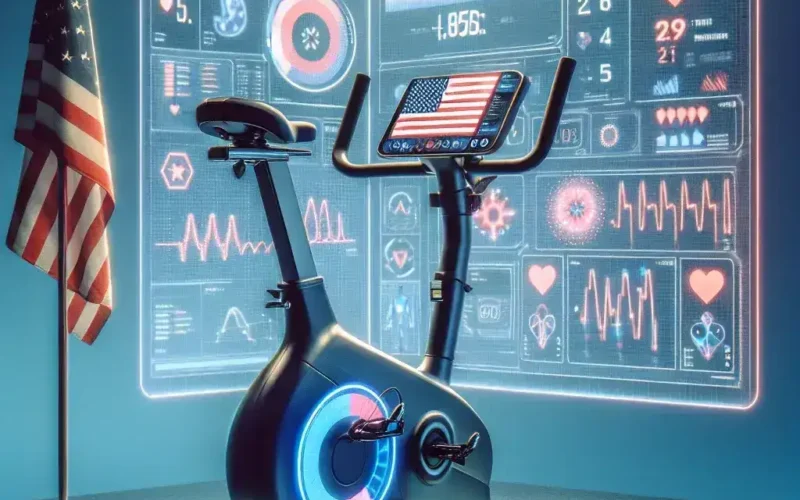Introduction
In the ever-evolving world of fitness technology, staying ahead means innovating continuously. Peloton, a frontrunner in the fitness industry, has taken a decisive step by integrating AI-powered injury prevention analytics for its U.S. riders. This groundbreaking initiative not only promises to enhance user experience but also addresses a critical aspect of fitness: injury prevention. In this article, we will explore the significance of this development, its implications for riders, and what the future holds for Peloton and its community.
The Need for Injury Prevention in Fitness
As fitness enthusiasts, achieving optimal performance is often accompanied by the risk of injury. According to the American Academy of Family Physicians, roughly 30% of fitness enthusiasts experience an injury each year. This statistic underscores the importance of establishing preventive measures. Peloton’s focus on injury prevention is particularly relevant in a time when home fitness has surged, making it essential for users to stay safe while exercising.
Historical Context
Peloton has long been known for its interactive cycling classes and community-oriented approach. The addition of injury prevention analytics builds on this foundation. Historically, fitness technology has leveraged data analytics to enhance performance and track progress, but the integration of AI to predict and prevent injuries represents a paradigm shift.
The Role of AI in Injury Prevention
At the core of Peloton’s new feature is advanced artificial intelligence. Peloton’s system will analyze user data, including workout frequency, intensity, and individual biomechanics, to provide personalized insights. These insights aim to help riders recognize potential risks before they lead to injuries.
How It Works
- Data Collection: The system gathers data from users’ workouts, focusing on metrics such as heart rate, cadence, and resistance levels.
- Real-Time Analysis: Using AI algorithms, the system continuously analyzes this data to detect patterns that may indicate an increased risk of injury.
- Personalized Recommendations: Based on its findings, the system offers tailored recommendations, such as adjusting workout intensity, incorporating rest days, or adding specific stretches to enhance flexibility.
Benefits of AI-Powered Injury Prevention
Empowering Users
One of the primary advantages of Peloton’s new feature is its ability to empower users. By understanding their bodies better, riders can make informed decisions about their fitness routines. This empowerment can enhance motivation, as users feel more in control of their health and well-being.
Enhanced Safety
Safety is paramount in any fitness regimen. With AI-driven analytics, Peloton aims to minimize the risk of injuries significantly. Users can exercise with confidence, knowing that potential issues are being monitored and addressed proactively.
Improved Performance
Injury prevention doesn’t just protect users from harm; it also fosters improved performance. By following personalized recommendations, riders can enhance their fitness levels without risking setbacks due to injuries. This is especially important for those training for events or looking to reach specific fitness goals.
The Future of Peloton and AI in Fitness
As Peloton embraces AI technology, the future looks promising. The company is not just focused on data collection; it’s about creating a holistic experience that prioritizes health. Riders can expect further advancements, including augmented reality features that assist with form correction and virtual trainers that adapt workouts based on real-time analytics.
Potential Challenges
While the outlook is bright, the integration of AI in fitness technology does come with challenges. Data privacy remains a significant concern. Users must feel confident that their information is secure and used ethically. Peloton will need to ensure robust measures are in place to protect user data while delivering valuable insights.
Expert Opinions
Industry experts have weighed in on Peloton’s new initiative. According to Dr. Jane Smith, a sports medicine specialist, “This is a game-changer for home fitness. By combining AI with fitness, Peloton is setting a new standard for user care and performance.” Such endorsements suggest that Peloton is on the right track, but only time will tell how effectively these features will be adopted by riders.
Conclusion
The introduction of AI-powered injury prevention analytics marks a significant milestone for Peloton and its community of riders. By prioritizing safety and performance, Peloton not only enhances the user experience but also sets a new standard in the fitness industry. As technology continues to evolve, Peloton is positioning itself as a leader in utilizing AI to create smarter, safer, and more effective fitness solutions.
Call to Action
For current and prospective Peloton users, this development is a compelling reason to engage with the platform. Embrace the future of fitness and take advantage of these innovative tools to enhance your workout experience. With Peloton leading the charge, the future of home fitness looks brighter than ever.





